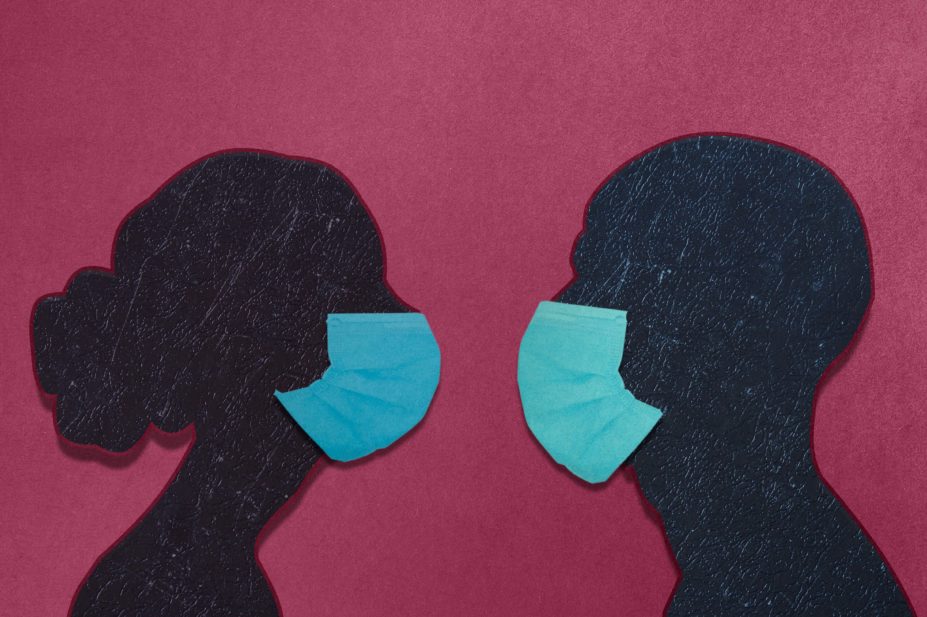
Shutterstock.com
When my daughter was 17 years old, we made a late-night trip to A&E. Her face was alarmingly swollen. She’d developed an angiodema after scratching her gum with a toothbrush. We waited for the doctor to emerge into the waiting room; me, the anxious mum, and my daughter doing her very best to hide her new ‘duck bill’ inside her sweatshirt hood.
The doctor finally appeared. He called out her name once with his back to us and without turning around, and after no one replied, disappeared back into the department. She is fiercely independent, and gets upset if I step in to help too soon. But in this instance, my daughter didn’t get a chance to lip-read her name call.
These days I tease my daughter about how Daffy Duck and I waited for hours to be seen. But at the time I realised that without me there to respond for her, she would have totally missed her chance to be seen.
Because my daughter is profoundly deaf.
We’ve come on leaps and bounds in technologies to assist people with hearing loss, but sadly we’ve not made the same progress in providing accessible healthcare to these people, and for them, communicating is becoming much more difficult.
Fast-forward to Sunday 9 August 2020, and my daughter is 25. It’s a big day for her. She’s about to tentatively step back into the real world after several months of being bound to home. She’s off to man a stall at the local craft market in Belfast city centre. And, as many of us feel, she is nervous at the thought.
Because she now has more than just social distancing and queues to contend with. For people like my daughter, who rely heavily on lip reading to augment the limited sound provided by hearing aids or cochlear implants, understanding people who are wearing masks or facial coverings is a whole new ball game.
As well as blocking out lip reading, masks distort and muffle sound, and disguise the emotions usually visible through facial expressions. Communication is much more than just verbal, so even hearing people have felt the loss of these clues.
As pharmacy teams, we could all be a little bit more deaf-aware. After all, hearing tends to decline with age, so many of the older people we support in the pharmacy will benefit from us improving the way we communicate. Here are some approaches and tools we can use.
A badge that identifies you
At the beginning of the pandemic, as more and more healthcare staff began wearing scrubs and masks, patients often told me that it was difficult to tell the professions apart. It really helps to see a clear and easy-to-read identification badge. Patients can immediately set the context for the ensuing interaction: “Ah, they are a pharmacist” — cue a conversation about medicines.
The right surroundings
People with hearing loss need to gain as many visual clues as possible, so lighting is very important. When you’re speaking, make sure the person isn’t squinting in bright light, and that you aren’t hidden in a shaded part of the room. If the clinical situation allows, wear a see-through mask and choose a quiet environment.
Involve them
Always direct your questions to the person with hearing loss, and make good eye contact with them, even if they have a family member, friend or interpreter with them. Too many times, people have spoken only to me once they found out my daughter is deaf. It must really hurt to feel ignored and suddenly invisible.
Write it down
My daughter used a notepad at the craft market, so she could ask customers to write down anything she couldn’t catch, but in the clinical setting a wipe-clean whiteboard would be even better.
We’ve also started using apps that convert speech to text, such as Google Live Transcribe and Otter. They have been surprisingly accurate in many settings, but they can be glitchy in noisier environments.
And I’ve recently discovered a free app called CardMedic, which allows you show healthcare flashcards; these could be really helpful when you’re carrying out a drug history, or explaining a new medicine to a patient.
Learn a few sign language expressions
My daughter is in full support of better embedding British Sign Language (BSL) in our school education in the UK. Until this happens, BSL may not be easy for everyone to learn, but all hearing pharmacists should learn a few simple sign language expressions, such as: “Hi, my name is…”, and “I’m the pharmacist”.
Most NHS trusts have good access to sign language interpreters, but these interactions must be planned in advance, and it may not be easy to organise a visit on the spur of the moment.
You can use gestures
Don’t be afraid to use gestures to help with your communication. As a family, we have incorporated many home-grown ones into our daily life.
Many years ago, one patient with hearing loss told me, through his BSL interpreter: “It doesn’t matter how you communicate. What matters is that you do it whatever way you can!”
Karen Miller, consultant pharmacist (older people), South Eastern Health and Social Care Trust, Northern Ireland
You may also be interested in
The importance of diverse clinical imagery within health education

Government should consider ways to prevent ‘inappropriate overseas prescribing’ of hormone drugs, review recommends
